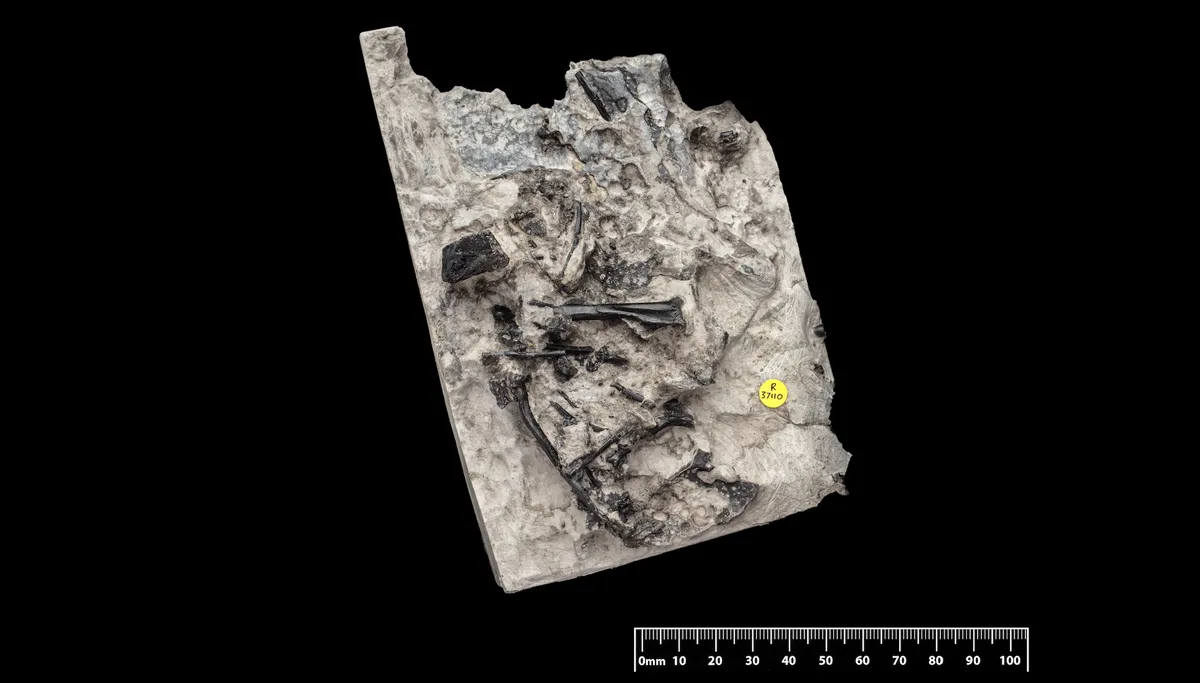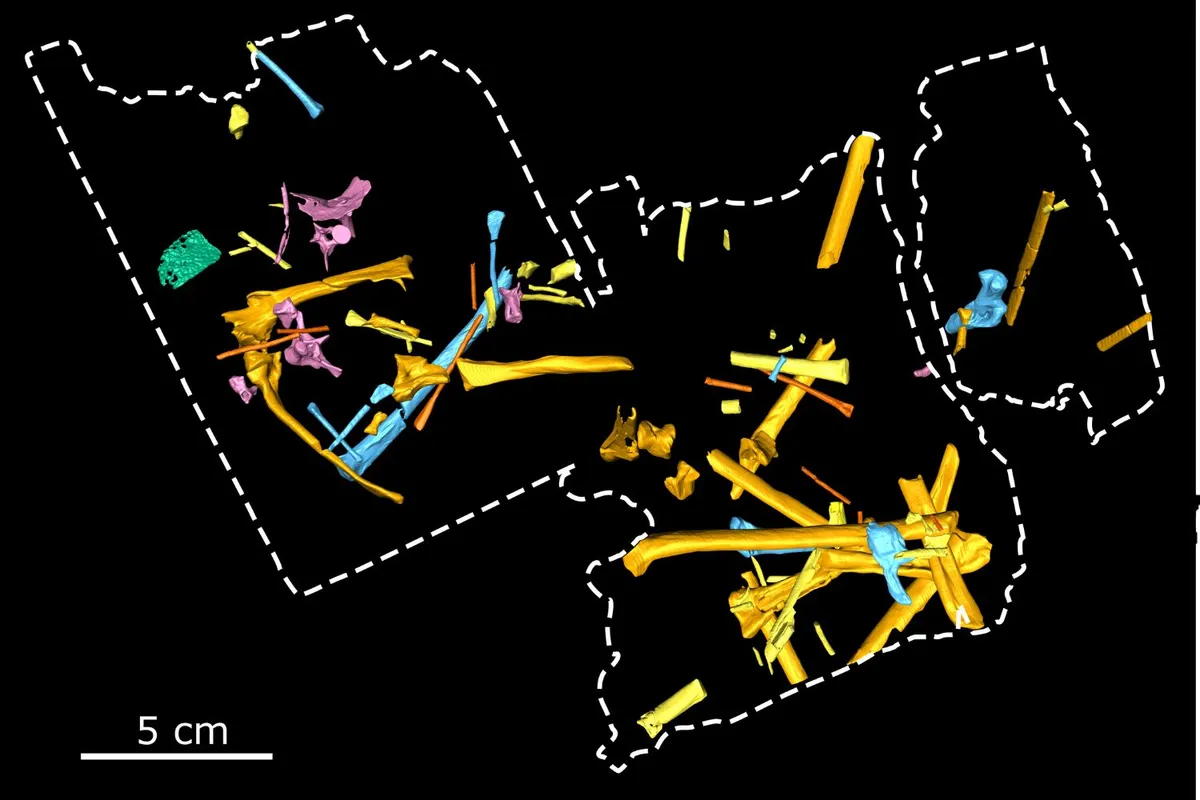Scientists have confirmed the remains of a dinosaur discovered on the west coast of the Isle of Skye as an entirely new species of pterosaur – a flying reptile that lived more than 160 million years ago.
The partial skeleton, which comprises sections of the shoulders, wings, legs and backbone of a single individual, show that this group of airborne vertebrates was considerably more diverse than previously thought.
Most of the bones, which were first discovered by palaeontologists in 2006, remain embedded in rock on the Scottish island and can only be studied using CT-scanning (a method used to avoid damaging the bones).
The finding was announced by scientists from the Natural History Museum, University of Bristol, University of Leicester and University of Liverpool, who named the new species Ceoptera evansae.

Ceoptera derives from the Scottish gaelic word cheò, which means 'mist' in English (referring to the common gaelic name for the Isle of Skye – Eilean a’ Cheò, or Isle of Mist); the Latin ptera translates as wing.
The second half of the name, Evansae honours Professor Susan E. Evans for her years of palaeontological research on the Isle of Skye.
The new species of pterosaur is part of the Darwinoptera clade (a group of organisms) of pterosaurs. The recent discovery on the Isle of Skye proves that the clade existed for far longer than previously thought, from the late Early Jurassic to the latest Jurassic – a period of more than 25 million years.
"The appearance of Ceoptera in the Middle Jurassic of the UK was a complete surprise, as most of its close relatives are from China." Professor Paul Barrett

"The time period that Ceoptera is from is one of the most important periods of pterosaur evolution, and is also one in which we have some of the fewest specimens, indicating its significance," says lead author Dr Liz Martin-Silverstone, a palaeobiologist in the University of Bristol's School of Earth Sciences.
"To find that there were more bones embedded within the rock, some of which were integral in identifying what kind of pterosaur Ceoptera is, made this an even better find than initially thought.
"It brings us one step closer to understanding where and when the more advanced pterosaurs evolved."
Professor Paul Barrett, merit researcher at the Natural History Museum and senior author on the paper, adds: “Ceoptera helps to narrow down the timing of several major events in the evolution of flying reptiles. Its appearance in the Middle Jurassic of the UK was a complete surprise, as most of its close relatives are from China.
"It shows that the advanced group of flying reptiles to which it belongs appeared earlier than we thought and quickly gained an almost worldwide distribution.”
Pterosaur fossils from the Middle Jurassic are rare and often incomplete, a fact that makes understanding early pterosaur evolution difficult.
The discovery of Ceoptera evansae provides important proof that Jurassic pterosaur groups evolved earlier than previously thought, and that they lived alongside avialans, the dinosaurs which eventually evolved into modern birds.
The study was published in the paper: 'A new pterosaur from the Middle Jurassic of Skye, Scotland and the early diversification of flying reptiles is published in the Journal of Vertebrate Paleontology' by Dr Liz Martin-Silverstone, Paul Barrett et al in Journal of Vertebrate Paleontology.
Main image: An illustration of the new species issued by the National History Museum. Credit: The Trustees of the Natural History Museum, London/Mark Witton
